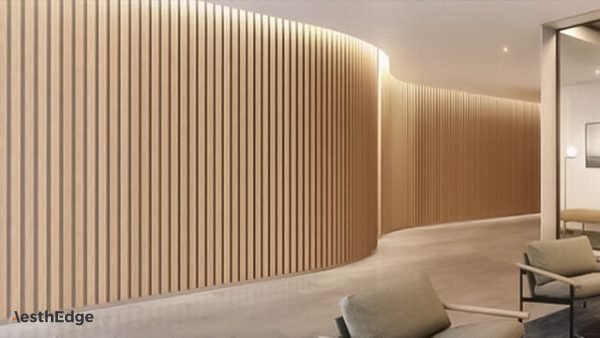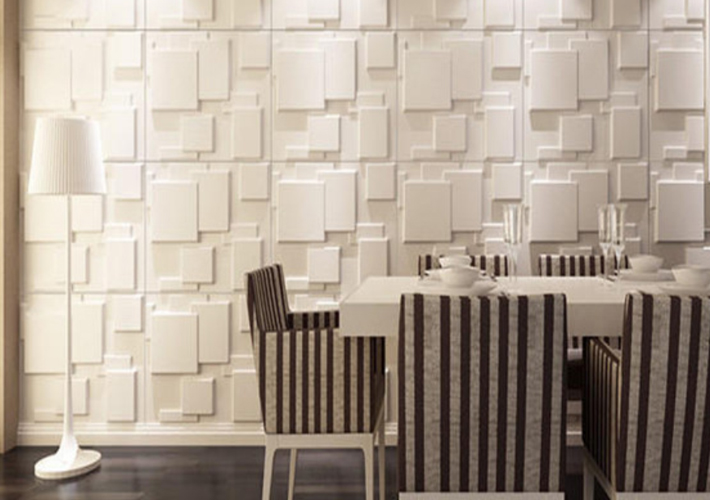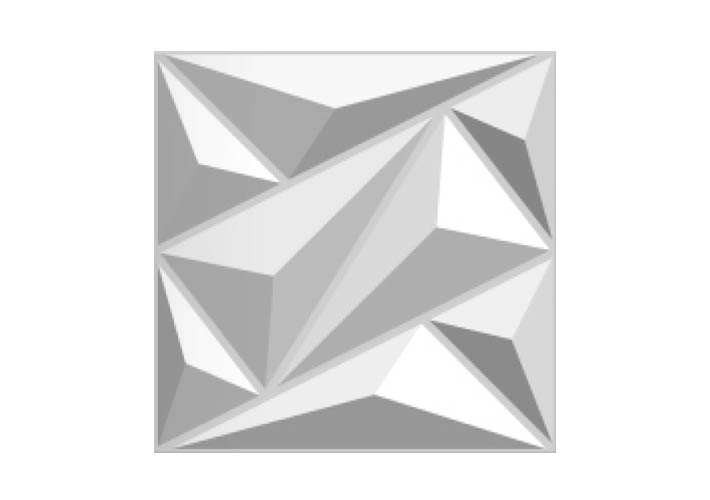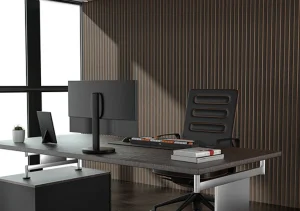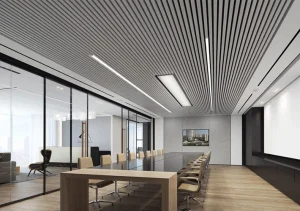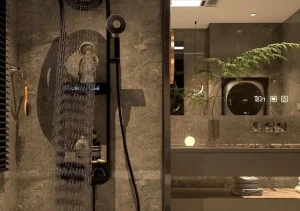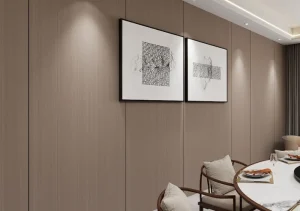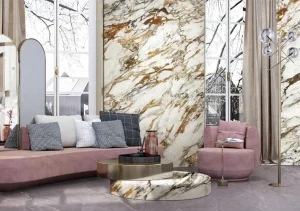3D PVC wall panels have gained significant traction in the decoration materials market for their unique aesthetics, durability, and versatility. These panels are widely used in residential, commercial, and hospitality spaces. However, the quality and performance of these panels heavily depend on the raw materials used in their production. This article provides an in-depth exploration of the raw materials, their properties, and their contribution to the final product, along with key considerations during manufacturing.
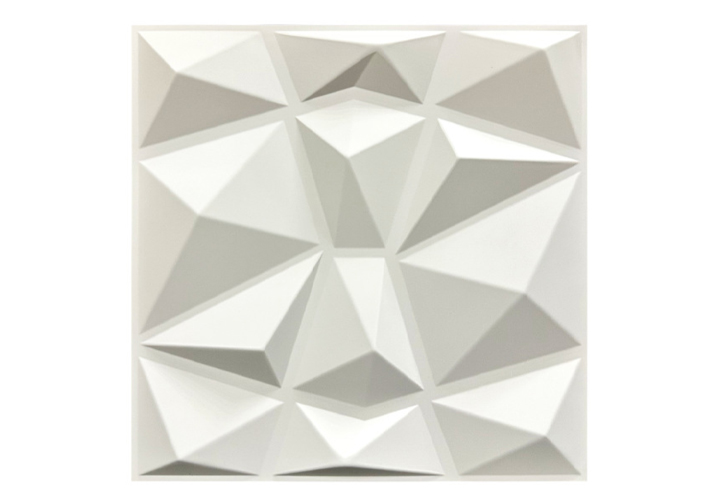
Table of Contents
ToggleMain raw materials of 3D PVC Wall Panel
1. Primary Raw Material: Polyvinyl Chloride (PVC)
Polyvinyl chloride (PVC) is the cornerstone material in 3D PVC wall panel production. It is a synthetic thermoplastic polymer widely known for its versatility and durability.
Properties of PVC:
- Lightweight: Ensures ease of handling and installation.
- Durability: Offers resistance to moisture, chemicals, and impacts.
- Recyclability: Makes it an environmentally conscious choice.
Grades of PVC:
- Rigid PVC: Used for structural integrity.
- Flexible PVC: Used for surface coatings or flexible designs.
2. Calcium Carbonate (CaCO3)
Calcium carbonate acts as a filler material in PVC wall panels.
Functions:
- Cost Reduction: Reduces the amount of PVC required, making the product economical.
- Enhanced Rigidity: Improves the mechanical strength and impact resistance of panels.
- Surface Smoothness: Provides a fine texture for aesthetic finishes.
The ratio of calcium carbonate to PVC must be balanced to avoid compromising flexibility or durability.
3. Plasticizers
Plasticizers are added to enhance the flexibility and workability of PVC material.
Common Types:
- Phthalates: Widely used due to their effectiveness.
- Non-Phthalates: Eco-friendly alternatives gaining popularity in recent years.
Benefits:
- Prevents brittleness.
- Allows intricate 3D designs.
Manufacturers must ensure the use of safe, non-toxic plasticizers to meet regulatory standards.
4. Stabilizers
Thermal and UV stabilizers are crucial in maintaining the integrity of PVC during processing and use.
Types of Stabilizers:
- Calcium-Zinc Stabilizers: Eco-friendly and commonly used.
- Lead-Based Stabilizers: Though effective, these are less favored due to environmental concerns.
Role in Production:
- Prevents degradation during high-temperature extrusion.
- Enhances the lifespan of the panels under exposure to sunlight or heat.
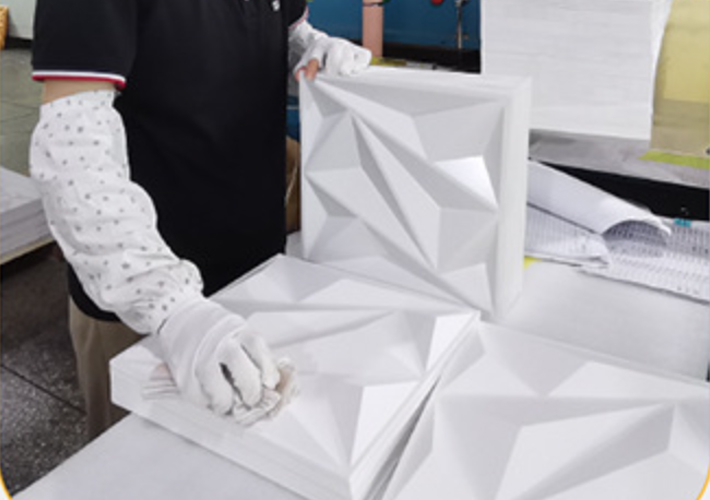
5. Pigments and Colorants
To create visually appealing 3D wall panels, pigments and colorants are added to the PVC mixture.
Types of Pigments:
- Organic Pigments: For bright and vivid colors.
- Inorganic Pigments: For durability and UV resistance.
Considerations:
- Ensure consistency in color distribution.
- Use non-toxic, fade-resistant pigments for long-lasting aesthetic appeal.
6. Additives for Surface Effects
Several additives are incorporated to achieve specific surface effects or functional enhancements.
- UV Inhibitors: Protect the surface from discoloration due to UV exposure.
- Flame Retardants: Ensure safety by reducing flammability.
- Anti-Microbial Agents: Prevent mold and bacterial growth, ideal for humid environments.
7. Recycled PVC Materials
Many manufacturers incorporate recycled PVC to promote sustainability.
Sources:
- Scrap PVC from industrial processes.
- Post-consumer PVC waste.
Challenges:
- Maintaining uniform quality.
- Ensuring compliance with environmental regulations.
Using recycled materials not only reduces production costs but also enhances the brand’s eco-friendly appeal.
8. Foaming Agents (Optional)
In some 3D PVC wall panels, foaming agents are added to create a lightweight, hollow structure.
Advantages of Foamed Panels:
- Easier handling and installation.
- Improved thermal insulation properties.
Foaming agents are carefully calibrated to achieve the desired density without compromising structural integrity.
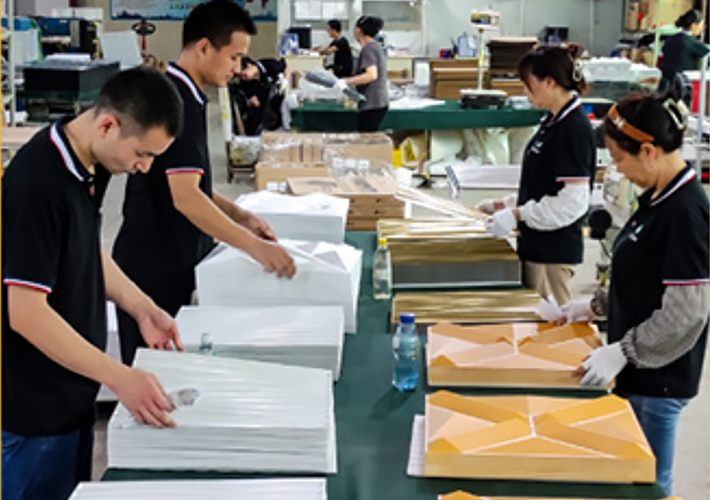
Production Process Overview
The production of 3D PVC wall panels involves the extrusion or molding of raw materials into desired shapes and patterns.
Steps:
- Mixing: All raw materials, including PVC, fillers, stabilizers, and pigments, are blended into a uniform mixture.
- Heating and Extrusion: The mixture is heated and extruded into panel molds.
- Shaping: Molds create the 3D designs and textures.
- Cooling: Panels are cooled to maintain their shape.
- Cutting and Finishing: Panels are cut to size and surface-treated for durability.
Quality Control of Raw Materials
Quality assurance starts with the selection of high-grade raw materials. Key factors include:
- Purity: High-purity PVC and calcium carbonate reduce the risk of defects.
- Consistency: Uniformity in material properties ensures reliable performance.
- Compliance: Materials should meet international safety and environmental standards (e.g., RoHS, REACH).
Conclusion
The raw materials used in 3D PVC wall panels directly impact their performance, appearance, and cost. By understanding the roles and characteristics of each component, manufacturers can optimize production processes to create high-quality products that meet market demands. Whether aiming for premium panels or cost-effective solutions, the careful selection and blending of materials ensure the final product’s success.
For businesses in the B2B sector, emphasizing the quality of raw materials and eco-friendly practices can serve as a unique selling proposition, attracting clients in search of reliable and sustainable decorative solutions.
Stunning 3D Wall Panel Transform Your Space Visually
3D Wall Panels are more than static decor—they're dynamic elements that allow you to engage with your space creatively. Each panel is designed to interlock seamlessly, offering a canvas of possibilities.
View More
